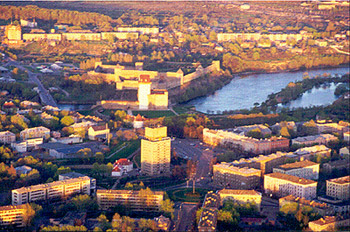| ::. | est | rus | .:: | Home | Contact | Documents | Environment | Partners | Links |
|
How the eCommunity System deals with (local) environmental problems in the context of sustainable urban development Sustainable Urban Development (SUD) is defined as "a complex system of legal, economic and other incentive systems, methodologies and tools, data and information resources by which society provides the necessary and appropriate support for efforts by individuals and cities to implement sustainability" (Paskaleva, Curwell et al. 2002). To reach SUD cities need to be economically efficient, socially integrated and environmentally friendly if they are to provide good quality of life and in order to survive and prosper (Curwell et al. 2003). In order to reflect the aspirations of all individuals and groups of society interactively and interdependently sustainable development has to comprise the ecological, the economical, the social as well as the cultural dimension. The environment and resource use dimension The environmental dimension of sustainability recognizes the indisputable fact that people are completely dependent upon the natural world, and that without the resources and ecosystems services it provides, life and development are impossible. In order to sustain the viability of ecological systems, development must not degrade or deplete them to such an extent that they are unable to function effectively. In the networked knowledge society, the use of Information and Communication Technologies (ICTs) is believed to be critically important for dematerialization of production and im-materialisation of consumption and lifestyles, green entrepreneurship, sustainable lifestyles, responsible living, corporate responsibility and sustainable communities (European Commission 2002). Information systems play an essential role in reaching environmental targets for sustainable development. Numerous actions on environmental preservation cannot be realized without the support of ICT. Special importance can be given to the possibility of ICT to create comprehensive monitoring systems for the protection and conservation of ecosystems. The accumulation of very large amounts of data; their effective use and archiving for the far future, requires a global structure and management facilities (Club of Rome, 2003). How the eCommunity System may tackle local environmental problems The eCommunity system is a web-based system that is designed to complement or replace existing offline practices. As all web-based systems, especially those that are designed to complement or replace existing offline practices, the eCommunity system has some immediate and direct environmental effects, like the reduction (although minimal) of traffic and the reduction of waste / garbage - especially paper - that would otherwise have been used to distribute the information that is now available online. Since the system deals with city development issues (among them with those that may have environmental impacts) local inhabitants have easier access to these plans and can express their opinion before development/production begins. Due to increased public awareness all development plans might receive more thorough environmental consideration as they are reviewed by more interest groups. The wider the public acceptance of the system - from both the local government and inhabitants' side - the better can be the chance to select and realize a more environmentally/financially optimal proposal for the given project. Besides strengthening public awareness of environmental issues, this tool also helps the decision making of inhabitants and local government officials by making it possible to view potential environmental effects before selecting their preferred option. In particular, development decisions that need to deal with a potential trade-off on the environmental side (e.g. building of a new school versus saving trees) will benefit through the implementation of the decision-making tool. The 3D modelling helps to support and illustrate the impacts of future developments, so that the citizens have better and more easily understandable information on the development plans. The system also strongly supports nature maps and environmental maps with landmarks and preservation areas that can be highlighted in real time. Environmental data will be fed in the GIS and map upload modules. These GIS maps and simple image maps are able to contain environmental data (e.g. air pollution). As they are not real time, an administrator needs to process the data first and upload it to the system as a color coded (etc...) map.
The following thematic maps deal directly with environmental management in / of Narva:
The local environmental risks and problems of Narva (see: Ants Tammepalu: Narva City and Vaivara parish provisonal Risk Assessment; Tartu 2004) are mostly the damage done by the oil-shale burning power plants and the ash deposits. Traffic is a growing problem. Some problems can occur due to the out-dated infrastructure in sewer lines, run-off that flows un- purified into the Narva River. To tackle these problems and support the management in the future, the open database could be filled with more environmental information, e.g.
References: Ants Tammepalu (2004). Environmental Risks of the City of Narva;Narva City and Vaivara parish provisonal Risk Assessment; Tartu. Download Ants Tammepalu (2004). Environmental Effects; Tartu. Download Club of Rome (2003). Towards a New Age of Information and Knowledge for All. Statement of the Club of Rome to the World Summit on the Information Society, Geneva, 2003. http://www.worldsummit2003.de/download_en/CoR-WSIS-Statement-Final-14-8-03.pdf Curwell, St., Deakin, M., Hamilton, A., Paskaleva-Shapira, K., Soubra, S., Turner, J(2002). A Research Roadmap for Sustainable Information Cities. Paskaleva, K. with S. Curwell et al (2002a). Sustainable Urban Development and the INTELCITY Challenge - Executive Summary. EU IST 'INTELCITY' project Position paper. http://www.scri.salford.ac.uk/intelcity/documents/Docs/SUD%20Summary4.doc |
